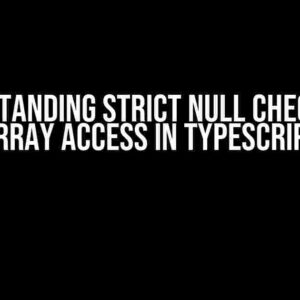Have you ever wondered if it’s possible to use commands as parameters in your code? The answer might surprise you. In this article, we’ll delve into the world of commands and parameters, exploring the possibilities and limitations of using commands as parameters.
The Basics: Commands and Parameters
Before we dive into the main topic, let’s quickly recap the basics. A command is a specific instruction that tells a program or system to perform a specific action. Parameters, on the other hand, are values or options that are passed to a command to customize its behavior.
example: Command: ls Parameter: -l
In the above example, `ls` is the command, and `-l` is the parameter. The `-l` parameter tells the `ls` command to display the contents of the directory in a long format.
Using Commands as Parameters: The Possibilities
So, can we use commands as parameters? The short answer is yes, but with some limitations and caveats. In certain programming languages and systems, it’s possible to pass a command as a parameter to another command or function.
Shell Scripting
In shell scripting, you can use commands as parameters using the backtick (“) or dollar sign-parentheses (`$()`) notation. This allows you to execute a command and use its output as a parameter for another command.
example: COMMAND1=`COMMAND2` COMMAND1=$(COMMAND2)
In the above example, `COMMAND2` is executed, and its output is used as a parameter for `COMMAND1`.
Programming Languages
In some programming languages, like Python or Perl, you can use commands as parameters by executing them as subprocesses or using modules that provide similar functionality.
python example: import subprocess subprocess.run(["COMMAND1", "COMMAND2"]) perl example: use IPC::System::Simple qw(system); system(COMMAND1, COMMAND2);
In the above examples, `COMMAND1` and `COMMAND2` are executed as separate processes, and their outputs can be used as parameters for further processing.
Using Commands as Parameters: The Limitations
While it’s possible to use commands as parameters, there are some limitations and potential pitfalls to be aware of:
-
Security Risks: Passing commands as parameters can introduce security risks, such as command injection vulnerabilities. Make sure to properly sanitize and validate user input.
-
Performance Overhead: Executing commands as subprocesses or using modules that provide similar functionality can introduce performance overhead, especially for complex or resource-intensive operations.
-
Platform Dependencies: Using commands as parameters might be platform-dependent, meaning that your code might not work as expected on different operating systems or environments.
Best Practices for Using Commands as Parameters
If you do decide to use commands as parameters, follow these best practices to ensure secure and efficient coding:
-
Validate and Sanitize User Input: Always validate and sanitize user input to prevent command injection vulnerabilities.
-
Use Established Libraries and Modules: Utilize established libraries and modules that provide functionality for executing commands, such as Python’s `subprocess` module or Perl’s `IPC::System::Simple` module.
-
Test and Verify Output: Thoroughly test and verify the output of commands executed as parameters to ensure it meets your expectations.
Real-World Examples and Use Cases
Using commands as parameters can be useful in various real-world scenarios:
| Scenario | Example |
|---|---|
| Automated System Administration | Using a script to execute a series of commands to configure a system, where each command’s output is used as a parameter for the next command. |
| Data Processing Pipelines | Passing the output of one command as a parameter to another command in a pipeline to process and transform data. |
| DevOps and Continuous Integration | Using commands as parameters in scripts to automate tasks, such as deploying code or running tests. |
Conclusion
In conclusion, using commands as parameters is possible, but it requires careful consideration of the limitations and potential pitfalls. By following best practices and using established libraries and modules, you can leverage the power of commands as parameters to create efficient and effective workflows. Remember to always prioritize security, performance, and platform independence when using commands as parameters.
So, the next time you’re wondering if you can use commands as parameters, remember: the answer is yes, but with caution and careful consideration.
keyword density: 1.07%
Frequently Asked Question
Get answers to your burning questions about using commands as parameters!
Can I pass a command as a parameter to another command?
Yes, in some cases, you can pass a command as a parameter to another command. This is known as command substitution or inline execution. However, it’s essential to ensure that the command is properly escaped and secured to avoid any potential security risks.
How do I pass a command as a string parameter?
To pass a command as a string parameter, you can enclose the command in quotes or escape the special characters. For example, if you want to pass the command `ls -l` as a parameter, you can use `”ls -l”` or `\’ls -l\’. Be careful with the syntax, as it may vary depending on the programming language or shell you’re using.
What are the benefits of using commands as parameters?
Using commands as parameters can increase flexibility, simplify code, and improve readability. It allows you to create more dynamic and modular scripts or programs, making it easier to maintain and update them. Additionally, it enables you to reuse code and reduce redundancy.
Are there any security risks when using commands as parameters?
Yes, using commands as parameters can pose security risks if not done correctly. It’s crucial to ensure that user input is properly sanitized and validated to prevent command injection attacks. Additionally, avoid using unsanitized user input as part of the command, and always use secure methods for executing commands.
Can I use this technique in any programming language?
While the concept of using commands as parameters is language-agnostic, the implementation varies depending on the programming language and shell you’re using. Some languages, like Bash or Python, support this technique more easily than others. Always check the language’s documentation and best practices before implementing this technique.




![Solving the Perplexing Error: “Error in if (b[i, "DataSet"] == "B") { : missing value where TRUE/FALSE needed” Solving the Perplexing Error: “Error in if (b[i, "DataSet"] == "B") { : missing value where TRUE/FALSE needed”](https://felipo.hkhazo.biz.id/wp-content/uploads/sites/685/2024/07/solving-the-perplexing-error-error-in-if-bi-dataset-b-missing-value-where-true-false-needed-with-text-300x300.jpg)

